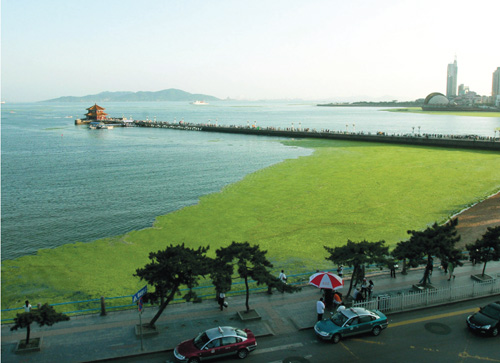Hello everyone (fellow swimmers)!
In our last post, we talked about microplastics. In this post, we’ll be further explaining the other two components of the toxic soup that is aquatic pollution.
Heavy Metals

Tourist boats galore in Maya Bay, Thailand (The Nation, 2018)
The second significant type of pollutant in the case of tourism is heavy metal pollution, in which heavy metals like lead and cadmium are released into the aquatic environment through common tourist activities that we’ve all probably been guilty of, like boat trips out for a scenic view on holiday.
Heavy metals, in and of themselves, are harmful to both animals and humans once ingested. Take the case of lead poisoning, whereby animals can experience muscle weakness and neural dysfunction (Assi et al., 2016); on the other hand, humans experience issues of developmental stunting, kidney problems, and even reduced reproductive functions (EPA, n.d.).
Yet, for all of these already-serious health impacts, perhaps the most insidious and worrying aspect of heavy metal pollution is the way in which it can be exacerbated by climate change, in which warmer waters will cause animals like fish to require more water intake to support their energy expenditure – indirectly resulting in even more heavy metal intake and subsequent poisoning. When one considers how we might actually ingest these marine animals in the longer term, a bleak picture similar to our ingestion of animals poisoned by plastic emerges.
Too much nutrients

Eutrophication along the coastline (Zhang, 2008)
A third and final type of pollutant is the nutrients (like Phosphorus and Nitrogen) from sewage discharge and effluent from tourism-related businesses, leading to the issue of eutrophication – characterised by greenish, stagnant-looking water bodies.
In its essence, eutrophication happens due to an excess of the above-mentioned Phosphorus and Nitrogen (which can be found commonly in excretion and fertilisers, and at normal levels are considered nutrients for aquatic life), resulting in excessive blooming of algae in water bodies. Consequently, the extensive layer of surface algae starves the water of oxygen, thereby killing life under it; in its death the algae releases toxins, adding to the toxins released beforehand during the death of aquatic life under it, like fish. This ultimately results in an extremely toxic water body unfit for neither recreation nor consumption.
Swimming into the deep
Now that we’ve briefly explained the three main types of aquatic pollution from tourism, (micro)plastic pollution, heavy metal pollution, and eutrophication, the next few posts will be focused on more detailed cases of aquatic pollution. Keep on swimming with us!
—
References
Assi, M.S. et al. 2016. ‘The detrimental effects of lead on human and animal health.’ Veterinary world, vol. 9, no. 6, pp. 660-71, doi: 10.14202/vetworld.2016
Nation n.d., Maya Bay, online image, viewed 1 September 2020, https://www.nationthailand.com/news/30338976
US EPA n.d., ‘Learn about lead’, Lead, viewed 1 September 2020, https://www.epa.gov/lead/learn-about-lead
Zhang, J 2008, Algae bloom in Qindao, online image, viewed 1 September 2020, https://www.americanscientist.org/article/the-increasing-problem-of-nutrient-runoff-on-the-coast zhang picture
As this blog is strongly informed by the knowledge we’ve learnt from our Environmental Pollution module in school by Prof. David Taylor, a lot of the explanation of the concepts here are credited to his teaching.